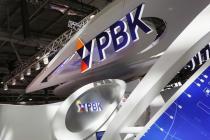Minelayer project "632"
In the middle of the last century, the sailors of the Soviet Union ordered a special ship - an underwater minelayer. TsKB-18 was assigned to work on the project, and in 1956 work began on the design of an underwater minelayer.
Due to the heavy workload of TsKB-18 on the design of missile submarines, the project of the submarine, with about 40 percent readiness, is transferred to the TsKB-16 team.
Based on the requirements of the project, the submarine had to have a diesel engine and accommodate special weapons of the order of 90 mines "PLT-6", specially designed for submarines, there should also have been the possibility of quickly converting the minelayer into a transport submarine for transporting people and transporting oil, fuel and water. The storage of special weapons was carried out using revolutionary technology, the location of mines between compartments.
By the end of 1958, the project of the 632 underwater minelayer was adopted by the State Commission, but the project was not included in the seven-year shipbuilding plan, which began in December 1958, but the submarine of the 648 project was included. All work after the approval of the seven-year plan for the mine layer project was stopped, and eventually stopped. Of the main reasons for not implementing the project, the high cost of batteries and the fact that the submarine of the 648 project could perform all the tasks solved by the 632 project and, in addition, could also perform other underwater transportation tasks.

1 - compartment for placing a torpedo; 2 - compartment for installing batteries; 3 - personnel compartment; 4 - CPU; 5 - compartment for placing mine weapons; 6 - racks for storing mines;
7 - diesel compartment; 8 - pipe for accepting and discharging mines; 9 - electric machine compartment; 10 - aft compartment
Main characteristics:
- displacement of 3.2 thousand tons;
- length 85 meters;
- width 10 meters;
- autonomy of navigation 80 days;
— the crew of the submarine 90 people;
- average speed 15 knots;
- the duration of the voyage is one month;
Armament:
- about 90 mines;
- mine devices 4 units;
- 4 TA caliber 533 mm;
4 TA caliber 400 mm.
Transportation:
- people up to 100 people;
- ammunition, cargo, food up to 120 tons;
- fuel up to 130 tons.
Submersible missile boat "Dolphin"
 The idea of creating such a unique project was submitted by the First Secretary of the Central Committee of the CPSU Nikita Khrushchev. During his stay in Sevastopol and inspection of the naval base, Khrushchev noticed missile boats and submarines standing nearby and expressed the idea of creating a submersible submarine fleet when the enemy uses atomic weapons. Only because the idea was submitted by the First Secretary himself, the project, so inconsistent in terms of requirements, continued to be stubbornly developed.
The idea of creating such a unique project was submitted by the First Secretary of the Central Committee of the CPSU Nikita Khrushchev. During his stay in Sevastopol and inspection of the naval base, Khrushchev noticed missile boats and submarines standing nearby and expressed the idea of creating a submersible submarine fleet when the enemy uses atomic weapons. Only because the idea was submitted by the First Secretary himself, the project, so inconsistent in terms of requirements, continued to be stubbornly developed.
The project, which received the number "1231", was instructed to develop TsKB-19, for the development and construction of prototypes, he was given a marine plant in the city of Leningrad. This is what served as the unification of TsKB-19 and Leningrad TsKB-5 in the future in the Almaz Central Design Bureau.
The development of a unique ship was carried out with great difficulty, it is worth noting that the main developments were made by the boat bureau, which had to study the design of submarines on the go. Linking together a surface ship and a submarine was a difficult task, and the designers had to show miracles of ingenuity and simplification.
In accordance with the terms of reference received from the naval department of the Soviet Union, the 1231 project was to be used to deliver fast missile strikes against enemy surface transport in places close to the main enemy bases. The missile ships were supposed to arrive in a given area and be in it in a submerged state and wait for the approach of enemy surface forces. With a sufficient approach of the enemy, the missile ships, surfacing, went to the distance of delivering a missile strike, after which they left at high speed in a submerged or surface position.

Work on the design of an unusual ship began in early 1959 and ended with the departure of Nikita Khrushchev from leading political positions in 1964. No one can say for sure now how the construction of a submersible rocket ship would have ended if Nikita Khrushchev had not left the post of First Secretary of the Party Central Committee.
Main characteristics:
- surface speed 38 knots;
- underwater speed 4 knots;
- crew of the ship 12 people;
- four cruise missiles of the P-25 complex;
- approximate cost in 1960 - 40 million rubles;
Amphibious transport boat of the project "717"
By 1962 the American submarine fleet makes a breakthrough in the construction of nuclear submarines. The Soviet Union is urgently trying to catch up and overtake its main competitor in nuclear shipbuilding.
To obtain the status of a leader, the Soviet Union begins designing large submarines for various purposes. In 1967, the Malachite design bureau received a technical assignment from the naval department for the design of a submarine for transporting troops of up to 1,000 people and a dozen armored vehicles for combat missions.

KB "Malachite" already had experience in the development of large submarines of project "664" and project "748".
If the nuclear-powered ship had been built, it would have become the largest submarine ever. Displacement of 18 thousand tons, a height of a five-story building, a length equal to 2 football fields - a real giant underwater world was intended to transport a regiment of marines and various weapons and cargo to specified landing areas in order to capture bridgeheads on enemy territory.
In accordance with the project, the hull of the submarine was made of 2 cylinders. The compartment of central importance housed the personnel of the boat and landing units, numbering more than one thousand people. On the sides of the boat in the compartments were placed bottom mines in the amount of up to 400 units, the placement of which, according to calculations, could lock the entire composition of the US Sixth Fleet in Norfolk. By 1969, work on the design of the boat of the project "717" was completed.
But by that time, the Soviet Union urgently needed ballistic missile submarines to achieve military parity with the United States, all the forces of the Central Design Bureau and shipyards were thrown into the development and construction of nuclear submarines with nuclear weapons. All work on the sea leviathan was suspended and finally stopped.

The main characteristics of the project "717":
- width 23 meters;
- diving depth up to 300 meters;
- speed 18 knots;
- duration of autonomous navigation 2.5 months;
Armament:
— six torpedo tubes;
- 18 anti-submarine missiles;
- artillery guns 2 installations;
Transportation:
— regiment of marines with 4 armored personnel carriers-60;
- Marine battalion with 20 armored vehicles.
Project "667M" - nuclear submarine "Andromeda"
In the early 80s, the United States began to receive nuclear submarines with Tomahawk missiles capable of hitting a target at a distance of 2.5 thousand kilometers. In the Soviet Union, in the Design Bureau. Chelomey is urgently developing the Meteorit-M complex in pursuit. The cruise missile of the ZM25 complex surpassed American equivalent"Tomahawk" and had a purpose - the destruction of ground facilities and enemy targets.

It was for this missile system that design work began on the re-equipment of the Project 667A submarine, which was commissioned by the USSR Navy at the end of 1970. The work was carried out from 82 to 85 at the Severodvinsk plant. The missile compartment was completely replaced, 12 missiles of the Meteorit-M complex were located in the new compartment.

The submarine receives a new designation "667M", the number "K-420", the Americans called it "Yankee-sidecar". At the end of 1983, it became part of the Northern Fleet, and after 30 days, combat tests of the missile system began. The missiles not only accurately hit the target, but also exceeded all declared indicators, there were no breakdowns and emergencies.
In 1989, after the conversion, the project was closed. The missiles are fired, and the submarine is used as a torpedo submarine. In 1993 the boat was put into long-term storage.
The main characteristics of "Andromeda":
— displacement of 7.7 thousand tons;
- length 130 meters;
- width 12 meters;
- draft 8.7 meters;
- diving depth 320 meters;
- speed 27 knots;
— crew of 120 people;
Armament:
- RK "Meteorit-M", ammunition 12 missiles;
- TA caliber 533 mm;
- control system of RK "Andromeda".
Underwater barges and tankers
In the 80s she became actual idea submarine barges and tankers. In the confrontation between Iraq and Iran, in just 2 years, about 300 various oil vessels and transports were destroyed.
Western countries and the Soviet Union are forced to protect vehicles, and therefore in the USSR, in the Malachite Design Bureau, a project for a nuclear submarine for transport purposes is being implemented.

By the beginning of 1990, projects for tankers and barges with a carrying capacity of up to 30,000 tons were fully completed. But due to the change in the political system, the collapse of the USSR into separate states, the projects of underwater supertransporters were never implemented.
To return to the idea of underwater heavy trucks began today because of the aggravated cases of maritime terrorism.
Underwater transport will be able to deliver more cargo at a depth of up to 100 meters at a speed of up to 19 knots. The team of such transport workers will be about 35 people.
The idea of landing ashore from under the water was first practically tested back in 1938 in the Pacific Fleet. Ten saboteurs then went ashore from the Shch-112 submarine, which lay on the ground in Ulysses Bay near Vladivostok. The exit was carried out with the help of breathing devices EPRON-4, through the bow torpedo tubes of the boat. On the shore, they had a short fire "battle", blew up a training target and returned to the boat again. In 1940, a similar experiment was carried out in the Black Sea.
Since then, the idea has not died, from time to time it excited the imagination of the admirals with a picture of a sudden landing of Soviet marines for the enemy in the vicinity of Istanbul or on the coast of Great Britain.
Massive airborne landings, after the advent of anti-aircraft missile systems and jet fighter aircraft, had become a thing of the past by that time, but an underwater throw to enemy shores could well have been a success.
Therefore, the development of a landing submarine project was included as a separate item in the five-year plan of Soviet military shipbuilding for 1965-1970. It was intended “for covert transportation and landing of amphibious assault forces on an unequipped enemy coast; the withdrawal of troops and the wounded for their evacuation to our coast or their transfer to other points on the coast of a potential enemy; supply of ammunition, food and other types of material and technical support for troops operating in coastal areas.
The Project 748 diesel-electric submarine with a displacement of almost 10,000 tons (more than the nuclear strategic missile carriers of that time!) And a length of about 160 meters was supposed to take 470 marines, three PT-76 amphibious tanks and two BTR-60P armored personnel carriers into its womb . For self-defense, four 533-mm torpedo tubes with an ammunition load of 16 torpedoes and the Sword anti-aircraft missile system were intended. The cruising range under the RDP was 14,000 miles, which made it possible to deliver troops even to the shores of the United States.
But the time of diesel submarines has already passed, the RDP device could not provide such a giant with the necessary cruising range and stealth. Only a nuclear power plant could solve the problem, and the 748 project was urgently remade for it.
The project 748 nuclear transport and landing submarine (option IV) already had a displacement of 11,000 tons, and could take on board 300 marines, ten amphibious tanks and ten armored personnel carriers. Cruising range increased (on paper) three times to 30,000 miles. Underwater autonomy with landing on board was 720 hours (30 days).
But this interesting project, which has no analogues in world shipbuilding, remained unrealized, since the command of the Navy was carried away by a new “brilliant” idea - to create a universal ship: a large nuclear amphibious transport submarine, which is also a mine layer. In 1967, the Council of Ministers of the USSR gave the go-ahead for its development, and work on the 717 project began to boil in the design bureaus.
The main "activities" of the new underwater giant were supposed to be: covert delivery of amphibious assault forces and cargo to remote areas, evacuation of troops and the wounded (memories of the sad fate of the defenders of Sevastopol abandoned to the mercy of fate were still fresh), setting active minefields in remote areas of the World Ocean. A little later, "the rescue of the personnel of sunken submarines with the help of special rescue shells" was added, since the number of accidents of Soviet boats increased every year.
The variety of tasks for which the Project 717 submarine was intended gave unlimited possibilities for the flight of designers' imagination. As a result, the displacement of the boat has already reached 18300 tons, the length of the hull was 190 meters, the width - 23 meters.
The robust hull consisted of three cylinders: on average, the ship's weapons were placed (six torpedo tubes and 32 Strela-3 man-portable air defense systems), crew, paratroopers, power plant and equipment; in two side cylinders - landing equipment, cargo or spare minefields (250 marines, ten PT-76 tanks and ten BTR-60P armored personnel carriers or 252 mines). For landing, ramps were provided in the bow. The cruising range was 30,000 miles.
The command of the fleet, fascinated by the unique abilities of the future submarine, demanded that the work be accelerated. Going towards the wishes of the admirals, the Minister of the shipbuilding industry B.E. Butoma issued an order in September 1969 to build a series of five Project 717 submarines in Severodvinsk at the Northern Machine-Building Enterprise.
However, the project 941 Akula heavy strategic missile cruiser, which was created in parallel, crossed the road to the unique submarine. Only the Severodvinsk enterprise could build submarines of such a displacement. After some deliberation, preference was given to the strategic missile carrier, and the drawings of the Project 717 ship went to the archive shelves.
The dramatic events of the 70s convinced the command of the Navy of the need for a permanent presence in the operational squadrons of units of the Marine Corps, capable of acting as a "fire brigade" if necessary. That is why the construction of large landing ships of the Ivan Rogov type began, which could provide such a presence in the “hot spots” of the planet.
An interesting feature of the landing forces of the Soviet Navy was the presence of a large number of hovercraft (KVP), which was the result of the convictions of the commander-in-chief Gorshkov:
“Ships with dynamic support principles are largely devoid of many of the shortcomings inherent in displacement ships, such as greater vulnerability to torpedo and mine weapons, insufficient travel speeds, limited areas of combat use in the depths of the sea and in ice conditions, etc.
The main tactical property of hovercraft is that they are capable of moving over the water surface and over land, including ice cover, overcoming shallow water areas, freely moving from water to land, ice cover and vice versa. All this, combined with high speed and high carrying capacity, gives the new ships a number of very significant tactical advantages.
In his opinion, STOLs were an ideal means of landing amphibious assaults, so it was necessary to build as many of them as possible. Already in 1970, the Navy received the first project 1232.1 assault ship, the Jeyran, capable of delivering four PT-76 amphibious tanks and 50 marines (or two T-62 tanks and 200 fighters). The very name - landing assault ship - spoke of the appointment of a recruit of the Marine Corps: the landing of advanced units on an unequipped coast in order to capture a bridgehead.
True, in addition to the numerous advantages that Admiral Gorshkov wrote about, the Jeyrans, and other KVPs, had a serious drawback - a limited cruising range of only 300 miles (556 km), which did not allow them to be used at a great distance from the bases . The main areas of their combat use could be the Baltic and Black Sea Here they felt like a fish in water. A total of 19 units of this type were built.
In the mid-80s, after a short break, the construction of landing hovercraft resumed. Small landing ships of project 1232.2 Zubr went into the series, having the same cruising range (300 miles) as the Jeyrans, but a large carrying capacity (three tanks and 80 marines, or 10 armored personnel carriers, or 360 soldiers and 25 tons of cargo ).
In addition to the ships mentioned, in the 1970s and 1980s, the Soviet fleet received more than 60 hovercraft landing craft designed to transport marines and military equipment. These are boats of the type 1205 Skat (30 units), 1206 Kalmar (19 units), 1206T Kalmar-T (2 units), 1206.1 Murena (8 units), 1209 Omar (2 units) and other.
At numerous exercises regularly held in the 1970s and 1980s with the participation of the Navy, one of the most spectacular numbers of the program has always been the landing of amphibious assault forces. Surface ships and assault aircraft strike at the enemy fortifications, amphibious tanks and armored personnel carriers are sent to the shore from approaching landing ships, hovercrafts, shrouded in clouds of sand, fly to the shore, marines go on the attack. Fantastic spectacle!
The classic version of the amphibious landing, according to the views of the Soviet command, assumed the following stages of the operation: 1) the forward detachment (reinforced brigade of the marines) on landing assault ships and hovercraft captures the bridgehead with a sudden throw (according to the standards - at least 17 km along the front and 8 - 12 km deep); 2) by the time "H" + 6 hours, the landing from medium landing ships and transport ships of the first echelon - the main combat units of the motorized rifle division of the ground forces - is completed; 3) after that, the raid unloading of transports with the second echelon of troops, heavy weapons and rear services begins.
But behind the scenes of the ostentatious exercises, there were numerous problems that began already from the moment the operation was planned.
Most army commanders wanted to be sure to "follow the sea" and engage in battle only staff units with all their belongings, the pilots - to bomb only on squares, etc. ... In practice, up to half of the forces and means of the land formation remained on the coast as something burdensome in battle. For example, the Grad multiple launch rocket system does not have buoyancy and takes only one ammunition load with it. And how many problems with material support! Many types of ammunition, fuels and lubricants ... If a transport is sunk or an echelon with only one type of supply is bombed, the troops will stand up.
Therefore, in order to land a grouping of troops capable of autonomously conducting combat operations, it was necessary to create non-standard formations, units and subunits up to a platoon for the period of the operation. The Americans at one time solved this problem radically: in the bases there are formations of the same type of ships, i.e. administrative organization, in the seas and oceans - compounds of heterogeneous forces (operational organization). Expeditionary battalions, brigades, divisions of the US Marine Corps are always ready for autonomous combat operations.
Many problems were created by ill-conceived organizational structure, weapons and equipment of the Marine Corps and motorized rifle divisions allocated to the landing.
The absence of their own helicopters in the marines and their limited number in motorized rifle divisions, which are also equipped with bulky equipment, make landing troops inactive, capable of fighting only in a two-dimensional horizontal plane, but not in vertical coverage. Saturation with heavy equipment does not allow maximum efficiency use the payload of amphibious assault ships, especially hovercraft."
By the way, the Marine Corps officers themselves believed that it was better to use a large number of small fast landing ships, which will reduce the expected losses, while the destruction of even one large landing ship significantly reduces the combat capabilities of the landing. It is not necessary to land heavy military equipment in the forward detachment, but a large number of well-trained and armed marines capable of neutralizing antiamphibious defense units on a wide front, destroying launchers of coastal missile systems, radar stations, communications centers, etc.
In fact, the Marine Corps could most effectively act as special forces, providing the landing and advance of the first echelon of the landing force. But the command of the Navy, quite in the spirit of the Soviet tradition of "round - to carry, square - to roll", equated the elite units of the Marine Corps with ordinary motorized rifles, only delivered by water.
The Marine Corps received tanks and armored personnel carriers, but did not have any assault helicopters or fire support helicopters. In 1985, the Ka-29 combat helicopter was adopted by the fleet, but only a few copies of this machine were received by the Marine Corps.
At the end of the 80s, the Soviet marines suffered an unexpected addition to the family. Black berets were worn by soldiers and officers of three motorized rifle divisions of the ground forces at once, renamed coastal defense divisions. They, like the existing formations of the marine corps, became part of the Coastal Forces of the Navy created in 1989.
The reason for this transformation was as simple as an orange. From day to day, the signing of an agreement on the limitation of conventional weapons in Europe was expected, which provided for a significant reduction in the number of Soviet troops and military equipment in the European theater of operations. The navy was not covered by the treaty, and someone in the Ministry of Defense came up with a "brilliant idea" - to turn motorized riflemen into marines, and thereby exclude three full-blooded divisions of the ground forces.
So unexpectedly for themselves, the 126th Gorlovka twice Red Banner Order of Suvorov (Simferopol), the 77th Guards Moscow-Chernigov Order of Lenin Red Banner Order of Suvorov (Arkhangelsk) and the 3rd Guards Red Banner Order of Suvorov (Klaipeda) divisions joined the glorious family of the Soviet marines .
Such an impromptu shocked the representatives European states, and caused an international scandal over who is considered a marine and who is a simple one. In the end, the idea failed, these three divisions still had to be included in the number of troops subject to the treaty. Naturally, such a scam did not add credibility to the Soviet Union.
Along with the construction of combat submarines, many capitalist countries are designing underwater transport ships with nuclear power plants. Successful development nuclear energy makes it possible to use submarines for commercial transportation of goods. Theoretically, a cargo submarine has a number of advantages over a surface one. In foreign technical literature, the following main advantages of underwater transport are noted:
When moving at a sufficient depth, an underwater cargo ship has no wave resistance at all, although the friction resistance at the same carrying capacity with the surface increases slightly. Since at high speeds the wave resistance makes up a significant part of the total resistance of a surface ship, the speed of an underwater cargo ship with the same power of the power plant can increase significantly;
The operation of underwater cargo ships does not depend on the state of the sea and weather conditions;
The operation of underwater cargo ships also does not depend on the ice situation in the area of their navigation. This, on the one hand, makes it possible to maintain year-round navigation in ports, access to which is limited in winter for surface vessels, and on the other hand, to reduce the length of voyages using under-ice routes, and, in particular, routes passing through the North Pole.
Along with the advantages, underwater cargo ships have numerous disadvantages, which makes it impossible to use them as vehicles that can compete with surface cargo ships.
Comparative technical and economic data (Table 5) obtained in some countries showed that. increase
Table 5
Comparative technical and economic data of submerged and surface tankers
|
tanker type |
||||
|
Indicators |
iadvod-iy |
underwater |
surface |
underwater |
|
Cruising range, miles Deadweight, t Speed, knots Power plant power, l. With. Construction, cost, thousand dollars: buildings of a power plant |
24 000 80 000 16 |
24 000 40 000 37,4 |
||
|
Operating costs for the year, thousand dollars: fuel content of the crew current repairs insurance miscellaneous depreciation |
236 372 128 98 185 617 |
505 452 190 337 220 1765 |
596 393 160 180 154 1265 |
|
|
Carrying capacity for the year: million pg-mile thousand tons Cost of one t-mile, cents Annual income, thousand. dollars |
||||
Technical and economic data of underwater transport vessels
■ capitalistic
|
Design firm (year of project development) |
Vessel type |
Carrying capacity, t |
Water supply> o |
change-e, tch> o |
Displacement utilization factor by carrying capacity |
||
|
General Dynamics Corporation (1958-1959) The same » » » * |
20 000 30 000 40 000 |
38 LLC 62 200 92 200 |
41 LLC 68 400 |
0,53 0,48 " 0,43 |
|||
|
Mitchell Angie-, Nearing (1959) Same Furness Shipbuilding Company (1959) Ditto"-(1958)" Ditto |
Ore carrier "Moby" Dick Dry Cargo Transport Tanker |
47 000 17 100 34 500 |
76 850 28 600 56 000 |
||||
|
Mitsubishi Heavy ■Industries (1958) Okiezo Koguyo Compann (1957) |
Tanker »" |
54 500 80 OOO |
|||||
|
Kokums Mechaniska Werkstads (1959) |
|||||||
|
Norway |
Dry cargo transport The same |
ANNUAL income from the operation of underwater cargo ships At present, it cannot justify the increase in the cost of their construction and maintenance.
Other disadvantages of underwater transport vessels:
Large draft with a circular (most favorable for propulsion) shape of the cross sections of the hull;
Increased requirements for accuracy of keeping at a given depth (considering that the length of such vessels is usually commensurate with or exceeds the operational diving depth); : „ , .,
Difficulty in carrying out loading and unloading operations;
Table 6
with nuclear power plants designed in ski countries
|
Main dimensions, m |
Number of shafts X power and shaft „ thousand liters. With. |
||||||||
|
board height |
Speed under the go, knots |
Working D) diving. |
Crew, pers. |
Note |
|||||
|
1X30.2 2X49.6 4X60.0 |
Cross-sections of a rectangular hull |
||||||||
|
Turbo-electric power transmission to the shaft |
|||||||||
|
1X40.0 1X15.0 1X40.0 |
Cross section of elliptical hull |
||||||||
|
Goro Soto Project |
|||||||||
|
Elliptical Cross Sections |
|||||||||
|
Project Heggstad |
|||||||||
Significantly more difficult navigation conditions;
The need for higher qualifications of team members and difficult working conditions;
Inability to practically meet the basic requirements international convention for the protection of human life at sea.
Despite the economic inexpediency of building underwater transport ships, interest in them in the capitalist countries is not waning. This is explained by the significant advantages of underwater transport in comparison with surface transport in military terms.
in the event of a military conflict, large surface vessels, according to foreign experts, will become an easily vulnerable target for enemy submarines and aircraft. The loss of such vessels will adversely affect the transfer of goods by sea. Only transport submarines, which have such an important advantage as stealth, will be able to effectively supply blockaded islands, bases, fleet operational units and individual ships with fuel, ammunition, food, etc. "
Technical and economic data of transport submarines with nuclear power plants are given in Table. 6.
According to foreign experts, the construction of an underwater tanker is associated with fewer technical difficulties compared to the construction of a large-displacement dry-cargo submarine. The tanker does not need complex cargo devices and large cargo hatches. Loading and unloading of oil products is easier than bulk and, especially, general cargo. Core Density liquid cargo close to the density of water, which allows you to minimize the displacement of a tanker; ease of manipulation with liquid facilitates the trimming of an underwater tanker. Unlike dry cargo ships hunkers can carry cargo outside the strong hull, using the double-hull space for this purpose. This should lead to a reduction in the weight of the hull and, consequently, to some increase in the coefficient of utilization of displacement in terms of carrying capacity^ in comparison with underwater dry cargo ships.
In April 1958, the US Maritime Administration signed a contract with General Dynamics for the research study of nuclear submarine tankers. In December of the same year, the company expressed its opinion about the possibility of building submarine tankers, after which a new contract was signed (worth about 37 thousand dollars), which provides for model tests and the selection of the best options for such a tanker.
In the course of research, the design department of the company worked out several options for underwater oil tankers with a carrying capacity of 20,000-40,000 tons. The speed was varied in the range of 20-40 knots. When designing submarine tankers, American shipbuilders used to a large extent the experience of designing and building combat nuclear submarines.
"United States Naval Institute Proceedings, 1959, No. 10. ^ The displacement utilization ratio for carrying capacity is equal to the ratio of the weight of the cargo carried to the normal displacement. 3 Transactions SNAME, 1960, vol. 68.
In England, Mitchell Engineering Limited, together with Saunders Row, is studying the possibility of creating an underwater tanker with a carrying capacity of 80-100 thousand tons (Fig. 7). In 1958, these firms completed towing tests of models and carried out feasibility studies *.
The Japanese shipbuilding firm Mitsubishi Heavy Indust-ris has developed an underwater tanker with a carrying capacity of 30,000 tons. The draft design of this vessel was presented by Japanese engineers at the Second International Conference on Peaceful
Rice. 7. Sketch appearance English nuclear submarine tanker.
use atomic energy, held in Geneva in 1958. In the process of working on the project, the company tested tanker models in a wind tunnel and self-propelled tests of a model with a length of more than 9 liters and a weight of about 2 tons.
The original design of the underwater tanker was created by the famous Japanese shipbuilder Goro Soto 2. The tanker designed by him has minimum dimensions strong hull and pulling propellers. In addition, there is no solid ballast 3 on the ship. The latter can be doubted, since with a density of transported oil products of 0.7-0.8 t/l "*, solid ballast is necessary to extinguish excess positive buoyancy.
In Sweden, a project for a native water tanker * with a carrying capacity of 32,000 tons was developed by the joint-stock company Kokums Mekaniska Verkstads. Dutch, West German, Italian and French shipbuilding firms are also studying issues related to the underwater transportation of oil.
Along with work on the creation of tankers, other types of underwater transport vessels are being designed abroad. So, in England, the firms Mitchell Engineering Limited and

Rice. 8. Scheme of the general layout of the underwater dry cargo transport with a carrying capacity of 8650 tons, designed by Norwegian engineers.
/ - tiller compartment; 2 - turbine compartment; 3 - cargo hatches; -corridor; 5 - central post; 6 - navigational equipment room; 7 - living quarters for officers; “- room for ship's stores; 9 - wardroom; /O - antenna of the hydroacoustic system; //- trim tanks; /2 - fresh water tank; 13 - tanks of the main ballast; I - galley; 15 - battery room; 16 - provisional pantry; P - living quarters of the team; 18 - tanks lubricating oil; “- fan; 20 - diesel fuel tank; 2/- room for auxiliary diesel generators; 22 - durable replacement tanks; 23 - reactor compartment; 24 - feed water tank; 25 - cargo compartments; 26 - room for auxiliary mechanisms.
Sounders Row designed preliminary design underwater cargo ship-ore carrier "Moby Dick" with a carrying capacity of 28,000 tons, designed to transport ore from the north-eastern regions of Canada to England under the ice of the Arctic Ocean. If the project was approved by the government, the construction of the ship was supposed to begin no earlier than 1967. The estimated cost of building an ore carrier is 20 million pounds sterling 2.
Norwegian specialists, under the leadership of Heggstad, designed a number of transport submarines (Fig. 8) intended for the transport of general cargo with a specific loading cubic capacity of 0.7-0.8 m3/t. When designing as prototypes, they used American combat submarines with nuclear power plants."
The prospective development of projects for an underwater dry-cargo vessel and an underwater towing vehicle designed to tow strong containers or flexible containers with a payload 2 under water was also carried out by British specialists.
Scientific research and design work carried out in various capitalist countries have shown that the construction of underwater transport ships is currently technical. technically possible, but not economically feasible. Increasing economic efficiency underwater transport is closely connected with the further development of nuclear energy. Taking into account the general pace of development of nuclear technology, it can be assumed that submarines (mainly tankers) will become profitable no earlier than in the early 1970s.
GENERAL INFORMATION ABOUT THE DESIGN OF SUBMARINES
This work, made in the form of a reference book, is the only one of its kind and has no analogues in Russia. For the first time in our country, it summarizes the basic information about warships of the main classes of special construction, involved in solving combat missions at sea in the interests of the German Navy. For large surface ships and submarines, along with the main tactical and technical elements, the main moments of their combat activities during the war years are given. Wherein Special attention devoted to the conduct of hostilities against the Soviet Navy and in the operational zones of the Soviet Northern, Baltic and Black Sea Fleet. The latter fundamentally distinguishes this guide from other similar works, both in our country and abroad, and allows you to visually see the real damage inflicted by the German fleet on the Soviet one and vice versa.
Transport submarine XIV series
Specially built tanker submarine. From the beginning of their combat activities until the end of May 1943, these ships supplied about 400 submarines with fuel in the Azores region alone, while losing one tanker. For example, "U-459" refueled more than 20 submarines in one sixth combat exit. A total of 10 units of this series were built. Of these, "U-459" - "U- 464", "U-487" - "U-490" were built by the company "Deuchle-Werke" in Kiel, orders from this company "U-491" - "U-493" were cancelled. Orders for the construction of "U-494"-"U-500" and "U-2201"-"U-2204" by Germania-Werft in Kiel were also canceled.
"459" - 09/13/41 was launched, 11/15/41 was put into operation. On July 24, 1943, it was found on the surface and heavily damaged by a British aircraft in the Bay of Biscay north of Cape Ortegal (Spain). Abandoned by personnel , 19 people died.
”460” -13.09.41 was launched, 24.12.41. entered service. October 4, 1943 was sunk by depth charges of American aircraft of the escort aircraft carrier "Kard" north of the Azores. 62 people died.
"461" - 11/8/41 was launched, 01/30/42 was put into operation. On July 30, 1943 she was found on the surface and sunk by an Australian aircraft north of Cape Ortegal, Bay of Biscay. 55 people died.
“462" - launched on 11/29/41, entered service on 5/3/42.
"463" - 12/20/41 launched, 04/2/42 entered service. May 15, 1943 sunk by depth charges of a British aircraft west of Cape Ortegal, Bay of Biscay. 56 people died.
"464" - 12/20/41 was launched, 04/30/42 was put into operation. On August 20, 1942, she was found on the surface and sunk by an American aircraft on the approaches to the Faroe Islands. 2 people died.
"487" - 10/24/42 was launched, 12/21/42 was put into operation. On July 13, 1943, she was sunk by depth charges by American aircraft of the escort aircraft carrier Kor in the Central Atlantic. 31 people were killed.
"488" - 10/29/42 was launched, 02/1/43 was put into operation.
On April 26, 1944, she was sunk by depth charges from American escort destroyers in the central part of the Atlantic Ocean. 64 people died.
"489" -12/19/42 was launched, 03/08/43 was put into operation.
4 August 1943 was sunk by depth charges from a Canadian aircraft southeast of about. Iceland. 1 person died.
"490" - launched on 12/19/42, entered service on 03/27/43. On June 11, 1944, she was sunk by depth charges from American aircraft of the escort aircraft carrier Kroutan and the escort destroyers Frost, Inch and Hughes northwest of the Azores.
Table 3.6 Main elements of transport submarines
| Elements / series of submarine | VIIF | XIV | XX |
| 1. Displacement, t: | |||
| - normal surface | 1084 | 1688 | 2708 |
| - normal underwater | 1181 | 1932 | 2962 |
| - full underwater | 1345 | 2300 | 3425 |
| 2. Dimensions, m: | |||
| - maximum length | 77,63 | 67,1 | 77,1 |
| - length of the strong case | 60,4 | 48,51 | 58,1 |
| - maximum width | 7,3 | 9,35 | 9,15 |
| - length of the strong case | 4,7 | 4,9 | 5,1 |
| 3. Main mechanisms: | |||
| - type of instalation | diesel-electric | ||
| - number of diesels | 2 | 2 | 2 |
| - total power, l. With. | 3200 | 3200 | 3200 |
| - number of electric motors | 2 | 2 | 2 |
| - total power, l. With. | 750 | 750 | 750 |
| - number of screws | 2 | 2 | 2 |
| - fuel reserve (full) | (198) | (203) | (471) |
| 4. Travel speed, knots: | |||
| - surface | 17,6 | 14,9 | 12.7 |
| - underwater | 7.9 | 6,2 | 5,8 |
| 5. Cruising range, miles: | |||
| - surface speed 10 knots | 14 700 | 12 350 | 18 900 |
| - underwater speed 4 knots | 75 | 55 | 49 |
| - underwater speed 2 knots | 130 | 120 | 110 |
| 6. Immersion depth, m: | |||
| - working | 100 | 100 | |
| - limit | 200 | 200 | |
| 7. Dive time, sec. | over 40 | ||
| 8. Armament, number: | |||
| - 533 mm bow TT | 4 | - | - |
| . - 533 mm stern TT | 1 | - | - |
| - 533 mm torpedoes | 14 | - | - |
| - 37/80 zen.AU | 1 | 1 | 1 |
| - 37 mm rounds | 1195 | 2500 | 2500 |
| - 20/65 zen AU | 1x2 | 1x2 | 2x2 |
| - 20mm rounds | 4380 | 8000 | 8000 |
| 9. Autonomy, days | 35 | OK. 75 | |
| 10. Crew, pers. | 46 | 53 | 58 |
| 11. Year of entry into service | 1943 | 1941-43 | - |
| 12. Total was in service, units. | 4 | 10 | - |
Central Design Bureau MT Rubin, together with Norilsk Nickel, announced the resumption of a project to create a nuclear submarine for transporting goods along the Northern Sea Route under ice. The estimated cost of the project D is more than 3 billion rubles.
Recall that for the first time this idea was announced back in 1993 (see the material above from "DP" No. 1/93). Then it faded and reappeared at intervals of 2-3 years. Perhaps this time the fate of the project will be more successful.
On the opening day of the CIS OFFSHORE-2001 international exhibition "Oil and Gas of the CIS Shelf Zone" in St. Petersburg, the Governor of the Arkhangelsk Region Anatoly Efremov said that the boat was already standing at the walls of the State Unitary Enterprise PO "Sevmashpredpriyatie". "The submarine can float up, enter rivers and unload directly onto the ice," he says. "It will carry up to 10,000 tons."
Taming the typhoon
According to Sergei Kovalev, general designer of the Rubin Central Design Bureau, a Typhoon-type submarine will be used for cargo transportation. "The question is whether this boat should be decommissioned and disposed of, or rebuilt to transport nickel," explains the general designer. The reconstruction of one nuclear submarine is tentatively estimated by Rubin specialists at 3 billion rubles ($100 million).
Now the project exists only at the level of a technical proposal. As Sergei Kovalev explained, nickel would be transported much faster this way.
“The Norilsk Nickel company intends to export nickel from Norilsk to Murmansk,” says Anatoly Efremov. water is the cheapest.
Roots under water
Transportation of goods in the North rests on the need to use icebreakers. One of the reasons why Norilsk Nickel is looking for an alternative method of cargo transportation is that after the purchase by LUKOIL of OJSC Murmansk Shipping Company, almost the entire icebreaking fleet ended up with the oil company. To all appearances, Norilsk Nickel and LUKOIL cannot agree on tariffs for escorting ships. And the transportation of goods under water makes it possible to abandon icebreakers in principle. The question is how ready Norilsk Nickel is to finance this project.
From the DP archive
The St. Petersburg Marine Engineering Bureau (SPMBM) "Malachite" is working on a project for a submarine designed to transport petroleum products.
It will become one of the elements of the complex for the development of fuel deposits on the Arctic shelf, as well as a means of delivering cargo to the Far North. No ship-owning company in the world has submarine tankers.
Oil tanks
instead of missiles
"The project was created on the basis of the latest underwater technologies used in combat nuclear submarines, in the production of which SPbMBM Malachite specializes," says one of the authors of the project, the head of the department, Valentin Vinogradov. additional surveillance and orientation systems that ensure safe navigation in the Arctic, under the ice.The design of the tanker allows for loading and unloading operations at depth.An underwater tanker with a length of about 300 meters can be in autonomous navigation for up to 50 days.Similar developments were carried out in the 60s years by shipbuilding firms in the USA, Norway, Japan, however, they were never realized in metal. Under normal conditions D without ice cover D, an underwater tanker, of course, is inferior to a traditional ship due to its higher cost. Obviously, in transport ships capable of to navigate under the ice, Russia and Canada, with their long Arctic coasts and underwater hydrocarbon deposits, are most in need. According to experts, the Canadian shipbuilding industry does not have enough experience and intellectual potential to create such a project.
Oil transportation
without icebreaker
The need to create an underwater tanker is dictated by the desire to reduce the costs associated with the inevitable icebreaking escort of surface vessels in the Arctic. The departure of the tanker under the ice removes the problems associated with the instability of climatic and weather conditions.
The development of underwater deposits of the Arctic shelf, the prospects of which are now being considered by Rosshelf JSC, will intensify freight transportation in this district. The existing icebreaking fleet will obviously not be enough to escort surface tankers. (SPbMBM "Malakhit" D, one of the co-founders of JSC "Rosshelf" D, together with other enterprises of the Russian military-industrial complex, is developing a concept and is looking for engineering solutions to create a complex for oil and gas production in the Kara and Barents Seas.)
$210 million
Customers of the submarine tanker, which cost, according to preliminary estimates, is about $210 million, have not yet been determined. It is likely that the project will arouse interest both among oil producing enterprises and organizations that deliver fuel to the northern regions. The construction of the first tanker (it can be carried out by the Northern Machine-Building Enterprise, Severodvinsk) will take 5 years. "The Malachite Marine Engineering Bureau has projects for underwater cargo ships for various purposes - a tanker, a gas carrier, a container ship," said Valentin Vinogradov. cargo transportation will become feasible when permanent transcontinental cargo flows are formed, for example, along the routes Russia D North America, Russia D Japan, passing through the North Pole or along the Northern Sea Route. a new stage in the development of marine technology. The movement of ships under the Arctic ice will shorten the distance between the continents."
Anna Shcherbakova














